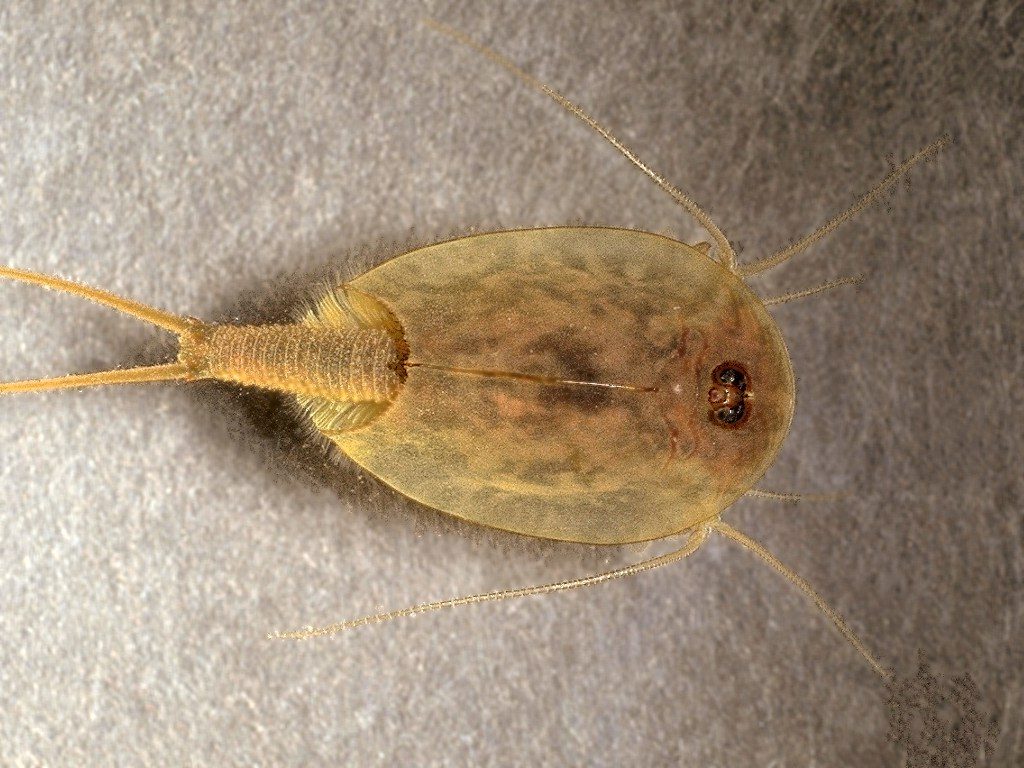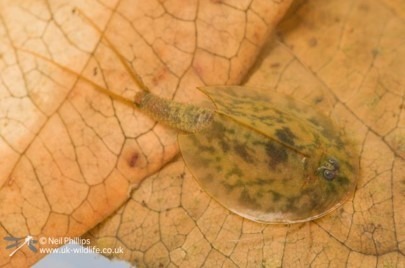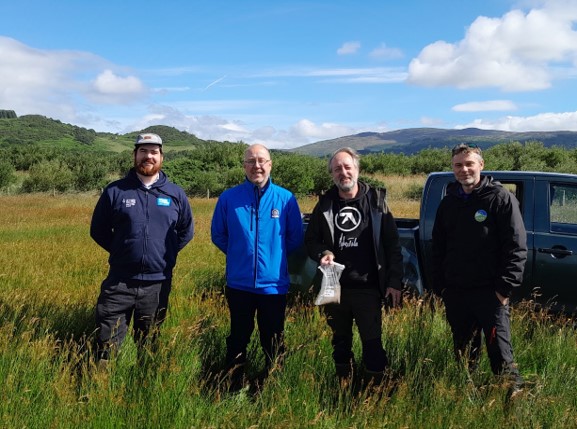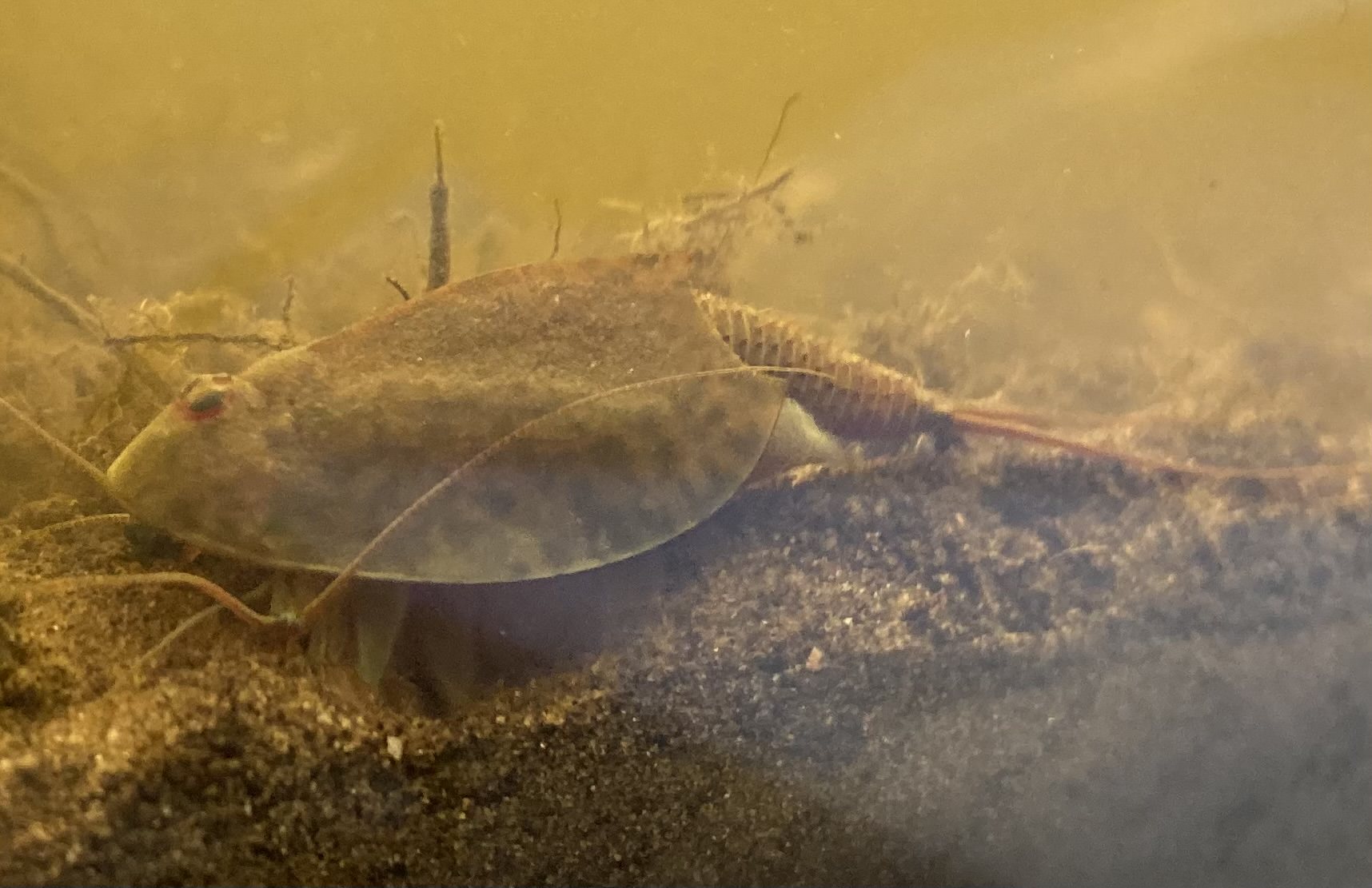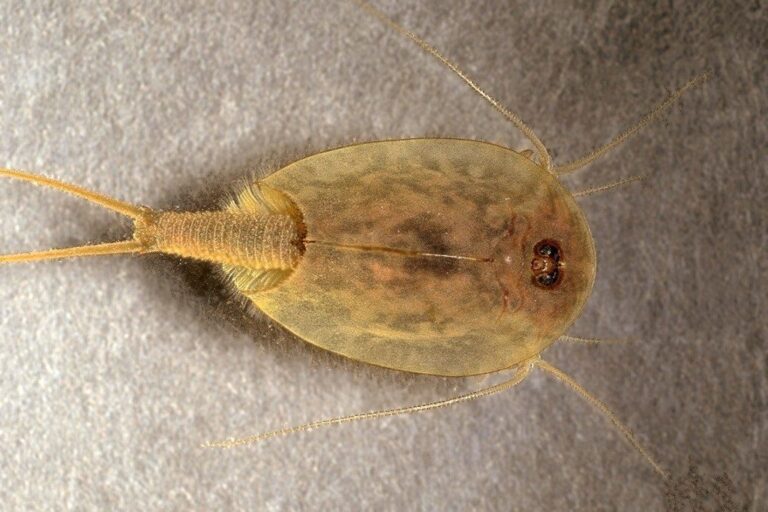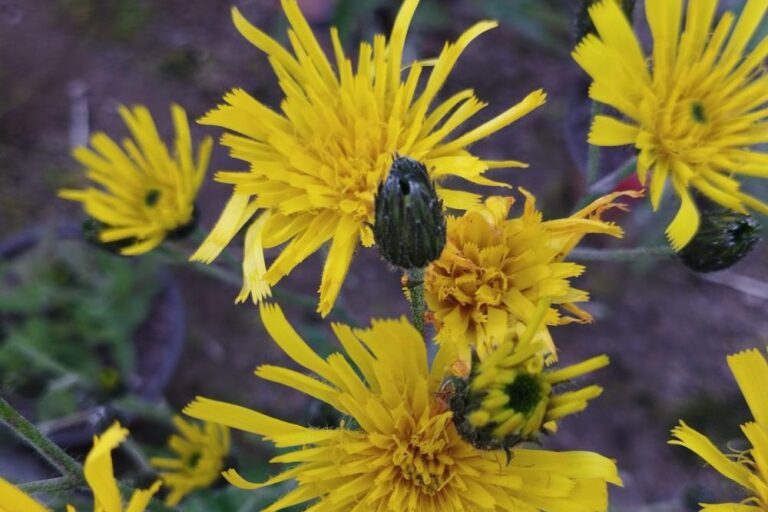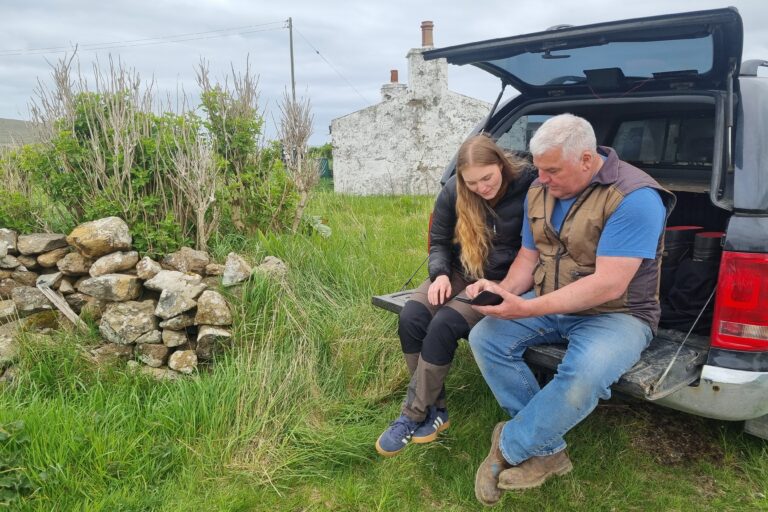Leugh ann an Gàidhlig / Read in Gaelic
Recent wet weather has hatched a new population of the rare and ancient Tadpole Shrimp – one of the world’s oldest living animal species – at RSPB Mersehead in Dumfries, only the third population of the species in the UK.
In recent decades, the Tadpole Shrimp had been reduced to only two locations in the UK: the New Forest in Hampshire and the Wildlife and Wetland Trust’s (WWT) site at Caerlaverock on the Scottish Solway Coast. The species had formally been present at Mersehead on the Solway Coast, however the population was thought eradicated in the 1960s when its site was engulfed by the sea. The last official record of the Tadpole Shrimp at Mersehead was 1948.
Through the endangered species conservation programme, Species on the Edge, wildlife charities Buglife, RSPB and WWT have been working with local ecologist Larry Griffin of ECO-LG Ltd to reintroduce the Tadpole Shrimp to its former site at the RSPB’s Mersehead Nature Reserve. In the summers of 2024 and 2025, Tadpole Shrimp eggs were introduced to a selection of locations at the Reserve in the hope of them hatching into the UK’s newest Tadpole Shrimp population.
Requiring rehydration before hatching, the recent wet weather on the Solway Coast has finally allowed the eggs to hatch, with two adult Tadpole Shrimps spotted at the site this month for the first time since 1948.
Craig Macadam, Conservation Director at Buglife, said: “It’s been over 75 years since the Tadpole Shrimp has swum in pools at Mersehead, lost from this stretch of coast because of coastal erosion. Bringing this species back to Mersehead is the culmination of many years of surveys, research and preparation by many organisations and individuals. This work will help secure the future of this species in Scotland, and should pave the way for further translocations to try and restore and enhance its original UK distribution.”
Nick Halfhide, Chief Executive of NatureScot, Species on the Edge lead partner, said: “This success story is a great example of how people are working every day to restore and value Scotland’s nature. Species on the Edge is one of the country’s most ambitious conservation projects to date and it is fantastic to see that, through communities and partnerships, species recovery in Scotland is achievable.”
The evolutionary success of the Tadpole Shrimp
The Tadpole Shrimp is a relative of one of the oldest known animal species in the world – a species with fossils dating back 220 million years. The reason it has managed to endure so long, surviving even ice ages, can be attributed to the species’ very clever biology.
Firstly, all Tadpole Shrimps in the UK are self-fertile female hermaphrodites, meaning a population can start from just one hatched egg.
Secondly, Tadpole Shrimps have adapted to survive highly inhospitable conditions. Tadpole Shrimps live in seasonal pools or puddles which dry out in the summer. These pools may only last a few weeks before drying out, and then it may be years or even decades before the water returns. When the pools dry out all predators and competitors are killed off.
Tadpole Shrimps have very rapid development, maturing from an egg to adulthood in just two to three weeks. This means they can hatch from an egg and produce the beginnings of the next generation before their pool dries out, all in the space of a few weeks.
But what happens to these eggs when the pool dries out? When Tadpole Shrimp eggs are laid, a proportion of the eggs hatch, and the rest go into diapause – this means the eggs dry out and their development is stopped. In diapause Tadpole Shrimp eggs are very durable and can survive up to an incredible 27 years. The eggs can also endure extreme temperatures, immersion in salt water, and can be eaten and excreted by an animal without harm. Once these eggs are rehydrated and the environmental conditions are right, the diapause will end, and the eggs will hatch forming a new generation of shrimps.
Bolstering Scotland’s Tadpole Shrimps
While Tadpole Shrimps have adapted to be a very hardy species, they have an extremely limited distribution, putting them intrinsically at risk of extinction. Rising sea levels, water pollution and land drainage have added further pressure to the species, placing it at further risk. Through Species on the Edge, Buglife, WWT and RSPB have been trying to reverse this trend of decline.
From 2023 to 2024, local ecologist Larry Griffin had been rearing Tadpole Shrimps hatched from eggs collected at Scotland’s last remaining site for the species at WWT Caerlaverock. 14 Tadpole Shrimps survived to adulthood and soon laid their own eggs in the tanks they were reared in. The sediment in these tanks, containing the eggs, was removed and dried.
In the summers of 2024 and 2025, dried sediment containing over 20,000 eggs was spread into bare earth of seasonally wet, but at-the-time dry, coastal pools at the RSPB’s Mersehead reserve on the Solway Coast. These pools are located on coastal grassland behind the dunes, further inland from the area where the previous population was thought lost in the 1960s.
The pools have since been wetted and dried several times, but this autumn the eggs have finally hatched, more than a year since they were first returned to Mersehead.
